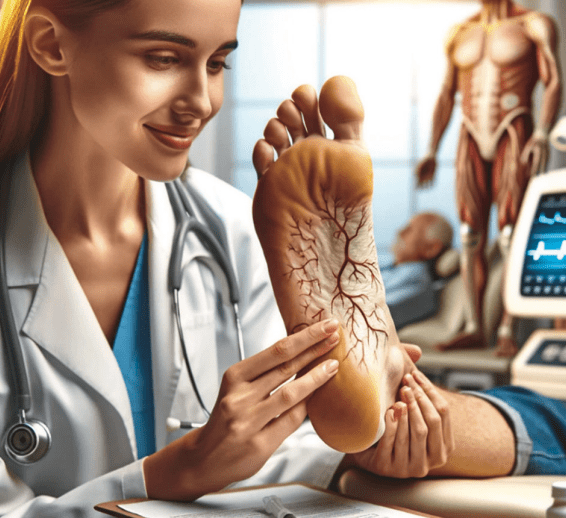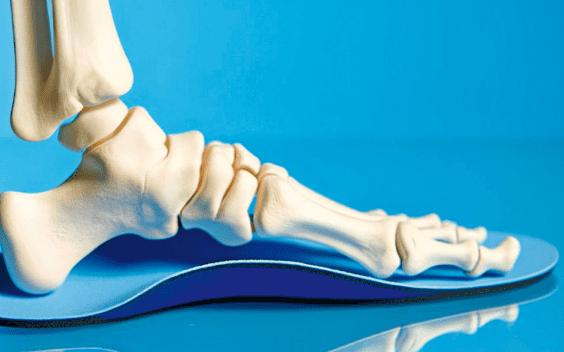The care and management of the human foot is something many of us generally never take the time to consider. Still, our feet have one of the most important responsibilities of any part of the human body, namely ensuring our mobility, and carrying us every step we take in our active lives. Such is this importance, that there is even an entire sub-sector of the medical profession focused on foot care referred to as Podiatry (or perhaps as Chiropody for those from the UK).
Most Malaysians would not automatically associate foot care with the podiatry profession, as many of the core components of our practice are to some extent covered by orthopaedic specialists, GPs, physios, and nursing staff. Even traditional medicine options like reflexology and acupuncture still receive broad support (and it would be fair to say they are also increasingly popular in the Western medical ecosystem).
For clarity, Podiatry as a profession focuses on several key areas:
Orthotic support Enhancing foot alignment and arch support with a blue insole
General Footcare
This involves the care and management of common foot issues such as ingrown or thickened toenails, hyperkeratosis (i.e., corns & callus), Plantar Warts (viral infections of the skin), and Tinea/fungal infections. Podiatrists usually treat these problems conservatively, with a need for periodic maintenance.
Podiatrists also offer patients and their carers counseling on selfmanagement, and maintaining as much independence as possible, especially since many patients are of advanced age and require regular ongoing care.
Diabetic Management
Diabetes has several potential complications for the heart, kidneys, eyes, as well as the foot and lower limb. It reduces blood circulation to the small blood vessels that supply nutrition to the more peripheral areas of the body, leading to reduced healing capability in the areas around the toes and plantar aspect (i.e., bottom surface) of the foot. Diabetes also affects nerve sensitivity in the lower limb, leading to reduced sensitivity to injury in the foot, which can cause neuropathic ulceration. Diabetic patients usually require close monitoring of their neurovascular health and some level of assistance with their general foot care to ensure that problems do not arise.
Podopaediatrics
Children can present with a variety of unique developmental issues, and most children will benefit from podiatric assessment at some point before age 6, or when schooling begins. Common problems include pediatric flatfoot, intoed walking, and calf muscle tightness. Older children may experience growing pains at the knee or ankle as the bones start to fuse during puberty. Podiatrists will usually advise regarding appropriate footwear options, physical therapy, and potentially, orthotic/prosthetic treatments that may provide assistance.
Biomechanics
This is the science of examining human movement, one of the most important components of podiatry practice. By examining a person’s walking pattern, weightbearing pressure, and the range of motion of their various joints, podiatrists can accurately assess potential underlying causes of physical aches and pains and take corrective measures to prevent them. Biomechanical studies can be very technical, routinely employing the use of high-speed cameras and digital force plates to give highresolution imagery of the clinical problem.
Orthotic & Footwear Fabrication
Assessing a biomechanical problem is only half the battle; reliably correcting it and resolving pain is just as important. While some problems can be resolved with simple stretching & strengthening exercises or purchasing better footwear, often a problem is the result of postural issues that require better support. Foot orthotics are designed to provide this support and control to the foot, essentially adjusting the ground surface to the required contour to provide stability. Other patients may experience chronic issues related to poorly fitting footwear, potentially requiring bespoke custom footwear to be considered.
Podiatry and footcare in Malaysia still have some way to go, but there is a very bright future here for skilled footcare providers of all kinds. With only a handful of podiatrists in practice in Malaysia, the profession can only have a limited impact on public health until more Malaysians pursue professional training abroad and return home to practice. This is where building professional links, not just with other medical disciplines, but with the footwear manufacturing sector itself offers such great potential benefits. Working with PedaHeel, Brendan has helped guide the development of various orthopaedic and footwear products designed to be used interchangeably in retail and clinical environments. It has seen the integration of 3D imaging and digital design with automated manufacture and more recently 3D printing of components for customized fitting and prototyping. The real benefit here goes to the consumers, as the mission for PedaHeel is to provide the highest quality orthopaedic footwear, manufactured to the most stringent international standards, but at a price point that makes it competitive not just in the global market, but also accessible to every Malaysian
About the Author
Brendan James Bergin is an Australian-born podiatrist who has been in practice since 1996, having trained at QUT in Brisbane, and holding various interstate positions in Tasmania, Victoria, and Queensland. He was invited to Kuala Lumpur in 1999 to establish a local podiatry presence, and has since found Malaysia a good fit professionally and personally, becoming Malaysia’s longest-serving clinical podiatrist. Brendan divides his time between two very busy practices in Gleneagles Medical Centre, Ampang, and Twin Towers Medical Clinic, KLCC. Since 2018, he has held the position of Technical Director with Pan Asiatic Footwear Sdn Bhd, the manufacturers of PedaHeel orthopedic footwear, and currently oversees and participates in new product development and design for the company





